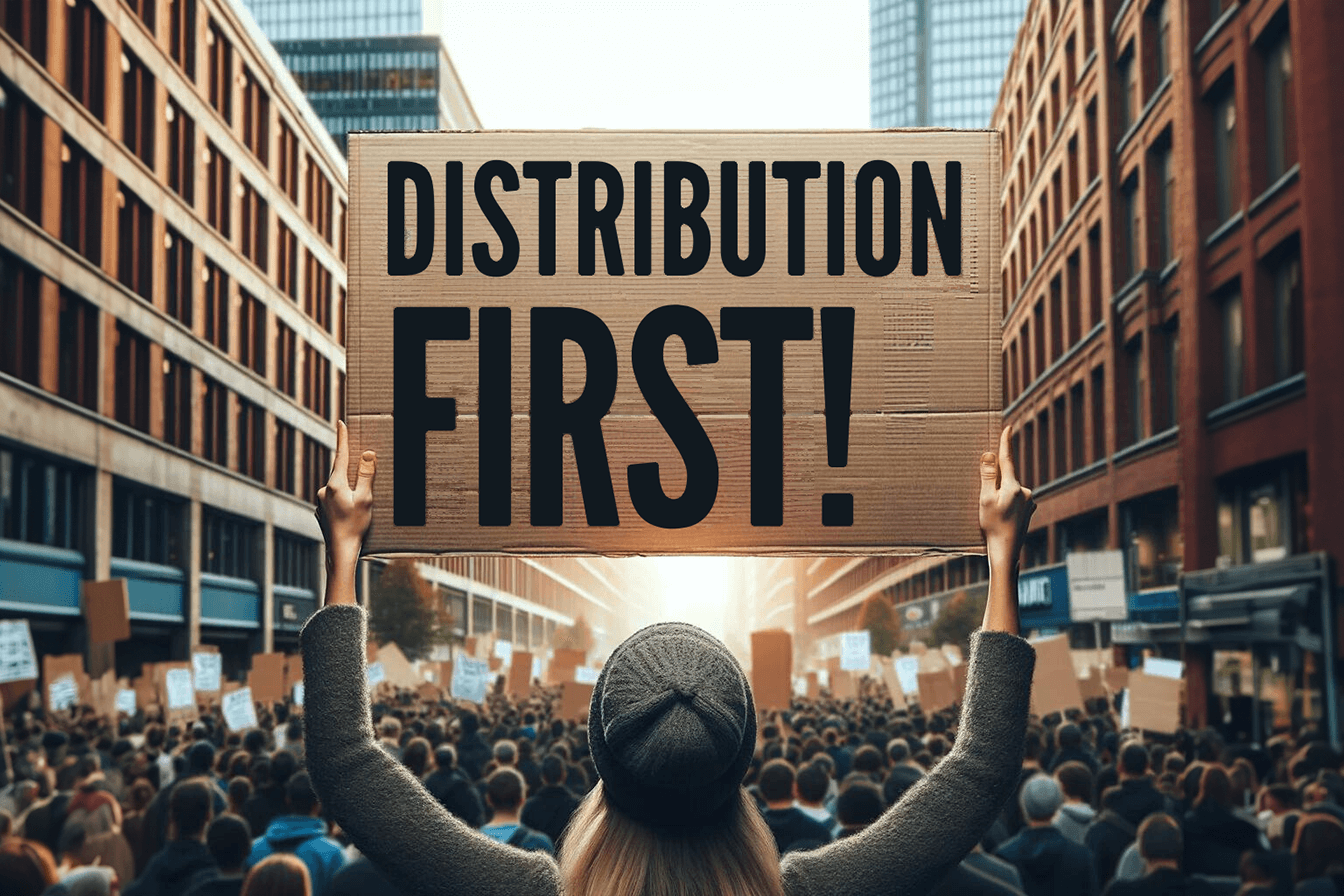"If you build it, they will come" is a classic startup mistake. It's the belief that customers will find your great product without a distribution strategy. Sometimes they do. Often, they don't.
Content marketers fall for this same trap all the time. We pour ourselves into crafting a perfect piece, hit publish, and hope for the best. Sometimes, readers show up. Often, they don't.
A distribution-first strategy starts with the "they will come" part. You analyze all your channels — including the unsexy ones — to find the biggest opportunities and only then double down with great content.
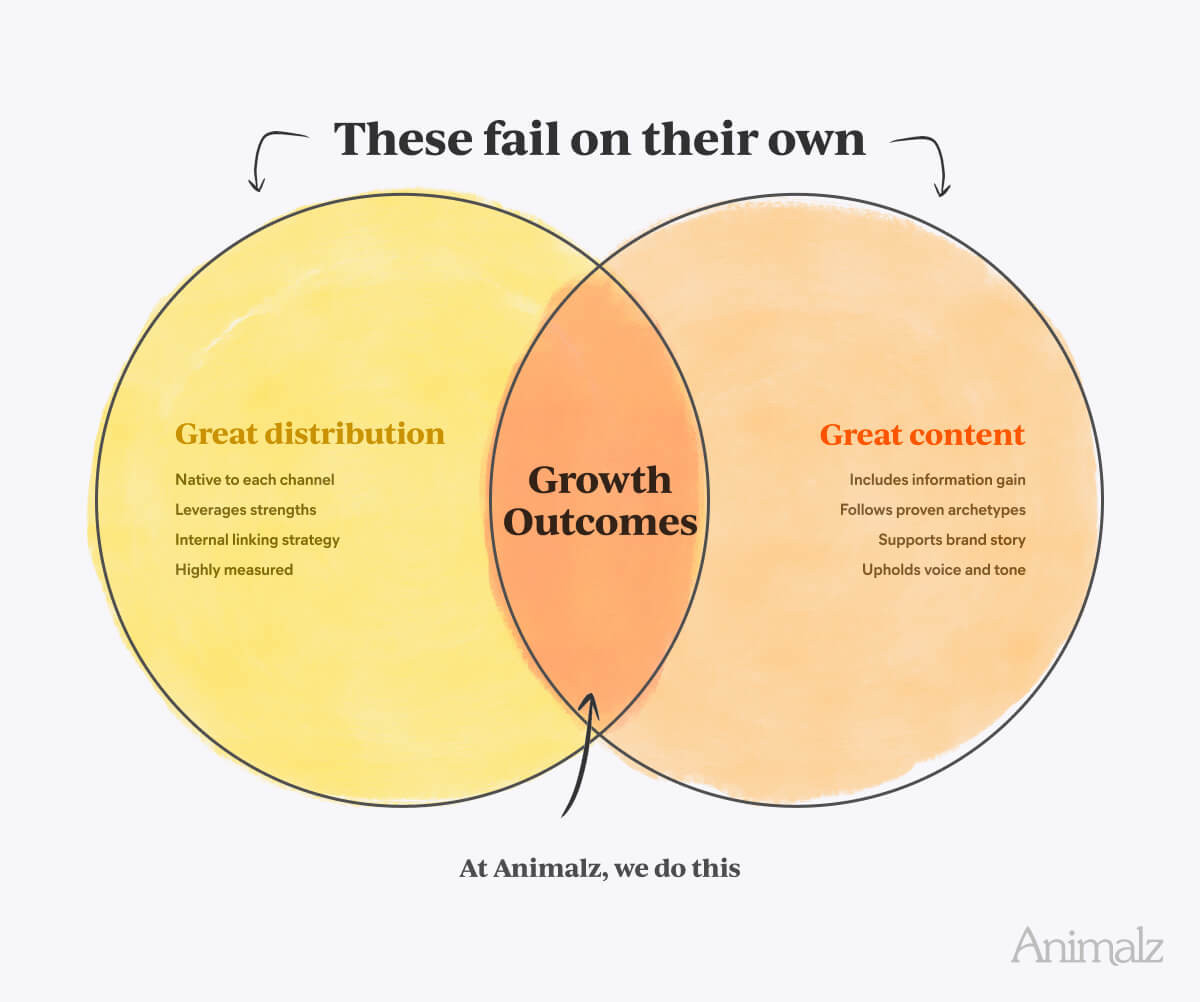
SEO Is No Longer the Safe Bet It Once Was
There was a time, not long ago, when distribution was of less concern in content marketing. The default strategy would be to start a blog, focus on SEO, andthey will come.
That playbook is slowly becoming outdated.
Until 2022, roughly four out of five Animalz customers would default to SEO and blog posts (andsee great results!).
We've seen a shift since early 2023. An increasing number of customers focus most of their budgets on different channels, platforms, and formats. Think email newsletters, LinkedIn posts, or data reports.
SEO still works, but there are several reasons why you shouldn’t place an SEO-driven blog at the center of yourcontent strategybefore considering other channels:
AI-induced uncertainty.Google’sSearch Generative Experience (SGE)— AI-generated summaries integrated into search results — creates uncertainty about how many clicks SEO content will get in the years ahead. Gartner expects a decrease of50% or more by 2028.
SEO arms race.Most keywords in most industries are heavily contested. Taking SERP positions and defending them takes much more effort than it used to.
Shorter attention spans.People are busy and might skip your long-form article. Many folks now get information from other content formats – videos, social posts, or emails.
ROI required.Executives and other budget bosses no longer accept content spent without clear evidence of its value.
Shifting eyeballs.The popularity of platforms such as LinkedIn, TikTok, and Substack has turned some audiences away from blogs.
Instead of betting blindly, a distribution-first strategy helps you find the channels with the highest potential ROI before committing.
First, Find Your High-Potential Channels, Then Double Down
Finding your best channels should be straightforward but isn't. Blinded bysexy-channel syndrome, we gloss over basics and confusefavoritewitheffective. By analyzing the preferences of your ideal customer profile (ICP) and the channels you’re good at, you prevent this from happening.
1. Where's Your Ideal Customer?
"Where did you last have it?" the parent asks the kid who lost something. The kid cringes at the obviousness of the question, but half the time, it solves the problem, and the lost item is found.
"Where does your ideal customer hang out?" is the content marketing equivalent. Of course, you should think of your reader first, but have you? Have you really considered which channelstheyprefer and why?
Maybe your ICP does read blogs and emails. But even if they do, they might still spend most of their time elsewhere: LinkedIn, YouTube, TikTok, Reddit, podcasts, invite-only communities — find out by surveying orinterviewing your target customersso you understand the channels that matter to them.
2. Which Channels Are You Good At?
“Most businesses get zero distribution channels to work… If you can get just one distribution channel to work, you have a great business. If you try for several but don’t nail one, you’re finished.”Peter Thiel in Zero to One
Unless you have unlimited resources, you can't win by doing SEO, building the founder's LinkedIn, managing a brand account on Instagram, and squeezing in some YouTube — even if your ideal customer uses all those channels.
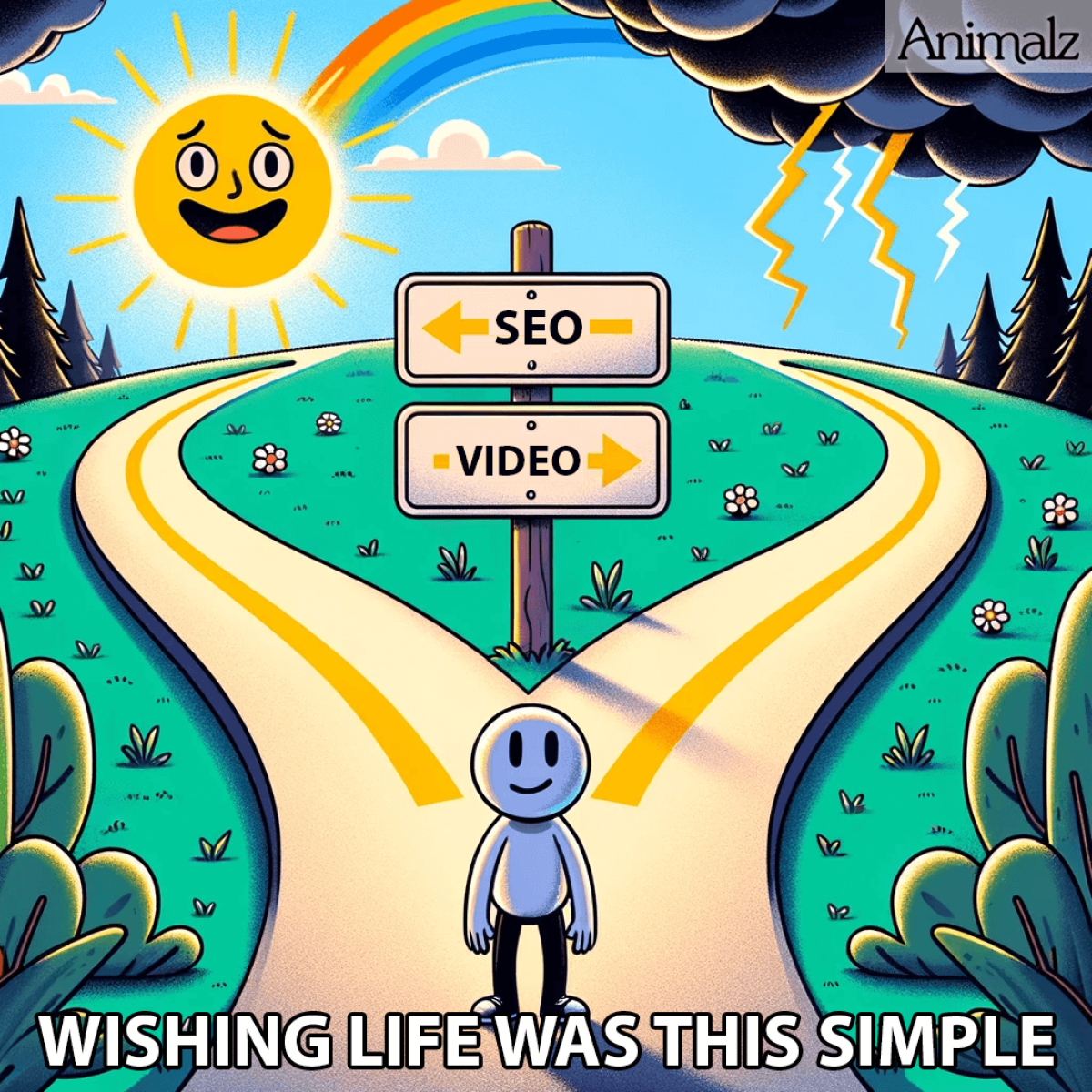
Review your existing channels to see where you have unique advantages:
List your channels(e.g., organic, LinkedIn, YouTube, TikTok, Reddit), including personal accounts you can use, like the CEO's LinkedIn. For each channel, note the follower or subscriber numbers.
Gather conversion data.List the conversion rate of each channel. In the absence of conversion data, or if the available data isn't meaningful (e.g., based on a small number of visitors), use traffic or engagement metrics as a proxy.
Determine channel benchmarks.Set a benchmark for each channel's conversion rate using data from online research tools likePerplexity, industry reports, or a content marketing agency like Animalz. 😊
Sometimes, getting a firm benchmark can be tricky. For example, you might not have conversion data on your CEO's LinkedIn posts, let alone find an official industry benchmark.
In such cases, make a well-reasoned estimate or find a meaningful substitute, like the numbers you see on the account of your main competitor's CEO.
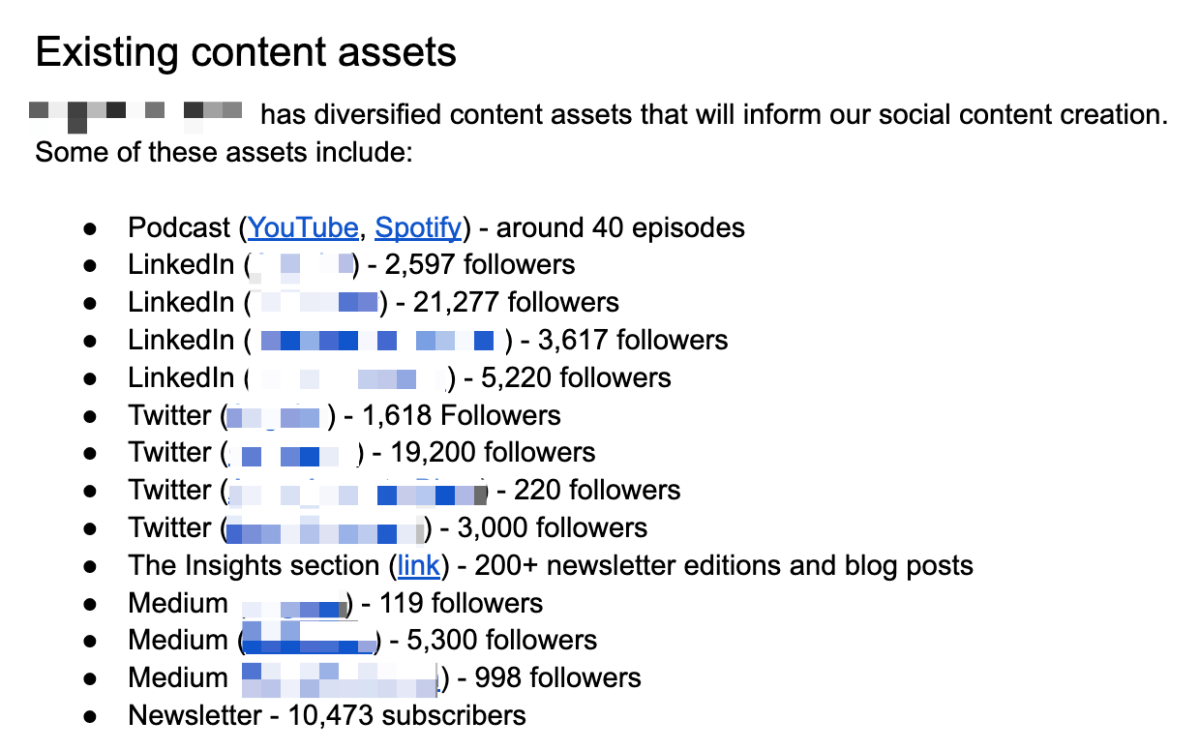
🚨Beware of Sexy-Channel Syndrome🚨
Many content marketers have a bias against specific channels. Everyone wants to do video and a blog filled withthought leadership content. But who considers creating content for their sales team a primary distribution channel to reach prospects or doubles down on content to support events?
Include such overlooked options in your evaluation. When you properly analyze your channels, you may find that the unsexy ones have the highest ROI potential.
3. Where Does Each Channel Fit on the Channel Growth Quadrant?
The Channel Growth Quadrant is a visual tool that helps you decide where to focus your distribution resources. You use the diagram to map channels based on their currentutilizationandpotentialto engage your Ideal Customer Profile (ICP).
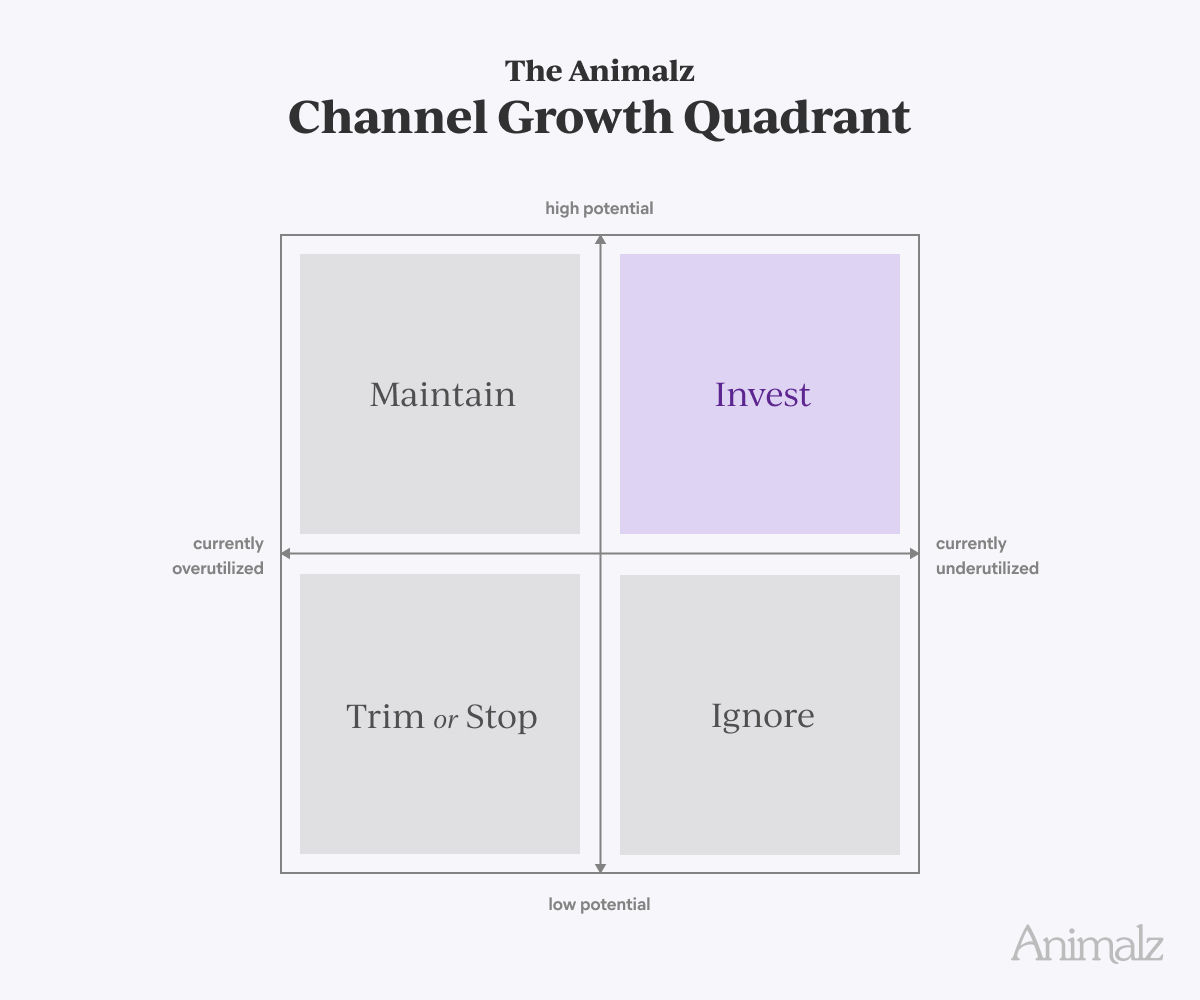
Determining Potential
You place a channel on thepotentialaxis by considering your existing assets and your ICP's preference.
Alignment between your resources (e.g., a large YouTube subscriber base) and your ICP's preferences (e.g., YouTube content) indicates high potential. On the other hand, if you have nobody on your email list and your ICP prefers LinkedIn, that would make a newsletter low potential.
Determining Utilization
Utilizationtells you how effectively you're capitalizing on each channel's potential.
A channel is under-utilized if you're not reaching the benchmarks you've set, suggesting room for growth through investment and optimization. Over-utilizing happens when you’re at or above benchmarks, but the numbers start plateauing or dropping.
By reviewing your channels this way and placing them on the Channel Growth Quadrant, you create a clear picture of what to do with each one.
Sensible Weather, a weather risk management platform, ran this exercise with us and found some surprising opportunities:
Their email list – with thousands of subscribers – was under-utilized with a monthly instead of weekly sending frequency.
Their executives each have 1.5k - 3k followers on LinkedIn but rarely post.
Dozens of partnershave their own audiences and could be interested in syndicating Sensible Weather’s content, something the team didn’t consider before.
Thanks to the insights from the Channel Growth Quadrant, Sensible Weather decided to direct more resources and effort into these previously overlooked channels.
💡 Want to run this exercise with your team?This Notion checklistprovides a tactical, step-by-step checklist of the entire process.
Doing Distribution-First: You Already Know How To
Many content teams unknowingly have a distribution-first strategy. They have all their processes, knowledge, and resources tailored to one channel by default: SEO.
An effective distribution-first strategy asks you to take a step back, evaluate the potential of all your channels, and only thencreate a tailored approachfor the most promising ones.
Do that, andthey will come.
